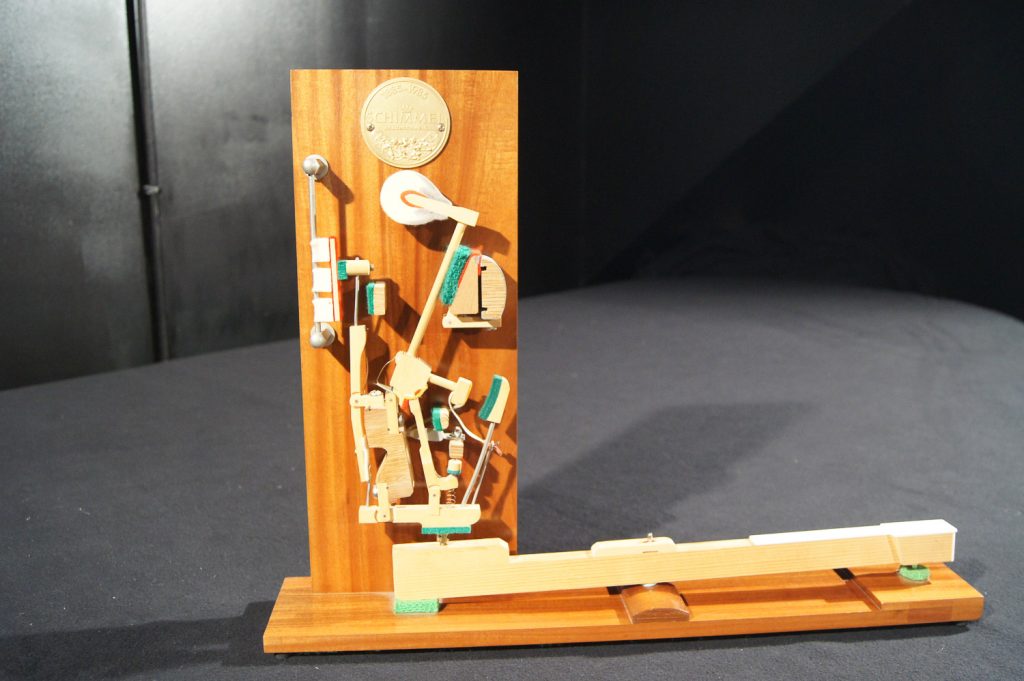
On an upright piano, the strings are vertical, so the hammers move horizontally.
As a result, the pianist does not completely master the inertia of the hammer.
If you start with your finger, the keyboard is a rocker, and when you press a key on the visible side, it lifts up on the invisible side (under the mechanism).
At this point, it pushes the hammer through the “exhaust stick”. This element allows to throw the hammer and to accompany it up to 2mm from the strings (the escapement). This allows it to hit the string with its momentum without preventing it from vibrating afterwards. At that same moment, the damper moves back to release the string and also let it vibrate.
After the hammer is struck against the strings, it is caught (leather against felt) to prevent it from bouncing and making an unwanted tremolo.
The sound will cut off when the pianist releases the key and the damper falls back against the string.
The only way to keep the sounds by releasing the keys is to use the loud pedal (right pedal) which moves all the dampers back.
This keyboard-mechanical set is made only of wood, felt and leather (with a few metal pins and screws); that’s why each element is adjustable, restorable or replaceable.
By adjusting the keyboard and the action, the upright piano is kept at its best performance.
All this, has for essential goal the comfort (touch) of the pianist!


